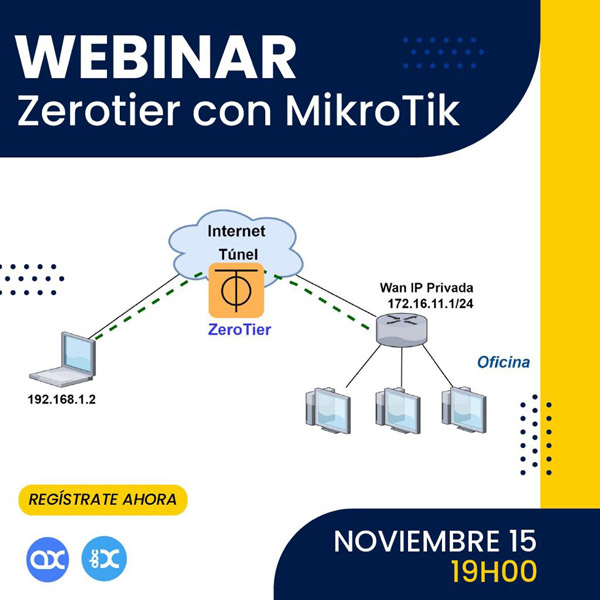How to mitigate in a WISP network, when clients mistakenly change the WAN to the LAN interfaces on their end routers and generate errors by sending broadcasts to the entire network, causing crashes?
These types of problems appear when the network is flat and the client, when making this type of connections, injects dhcp server into the network. To mitigate this type of problems, a complete change must be made within the network infrastructure; segment and route in order to create smaller broadcast domains on each of the nodes
The administration of the final CPEs must be carried out not in bridge mode since this generates transparency for the network from the end client. It is recommended that these devices be in router mode in order to segment the network of the end clients.
This situation is a common problem in WISP (Wireless Internet Service Provider) networks, where clients mistakenly configure their devices so that the WAN (Wide Area Network) interface is used as a LAN (Local Area Network), sending broadcast to the entire network, which can cause saturation and network outages.
To mitigate these types of problems and protect the network, various isolation and segmentation strategies can be implemented on the provider side. We leave you some additional recommendations:
1. Implement VLANs
VLANs (Virtual Local Area Networks) allow the network to be segmented into multiple virtual subnets, isolating client traffic. By assigning a unique VLAN per client or group of clients, you can prevent one client's broadcast traffic from affecting the entire network.
2. Broadcast Control
Use broadcast control techniques on network devices to limit or block the propagation of excessive broadcast traffic. Tools such as storm control on switches and routers can be useful for this purpose.
3. Client Isolation
Implement client isolation on APs (Access Points) so that devices connected to the same AP cannot see or communicate with each other. This can be achieved through features such as “Client Isolation” or “AP Isolation” available on many network devices.
4. Traffic Filtering
Configure firewall rules at the network entry point to filter out unwanted broadcast packets or limit the number of broadcast packets that can enter the network from a client connection.
5. Bridge Filters on MikroTik
If you use MikroTik equipment, you can implement bridge filters to block specific traffic between the LAN and WAN ports on your client devices, thus preventing broadcast packets from reaching the WISP network.
6. Customer Education
Providing guides and support to customers on how to properly configure their home routers can prevent many of these problems. This includes information on the importance of not altering WAN and LAN settings without proper knowledge.
7. Monitoring and Alerts
Implement monitoring systems that can detect abnormal increases in broadcast traffic and configure alerts to act quickly before it significantly affects the network.
8. Using DHCP Snooping
DHCP snooping can be used to ensure that only authorized DHCP servers can assign IP addresses within the network, avoiding network configuration problems caused by unauthorized DHCP servers on incorrectly configured client routers.
Implementing these measures requires careful planning and configuration, but can make a big difference in the stability and performance of the WISP network. It is essential to adapt these strategies to the particular specifications and needs of your network to ensure the best protection and service for your customers.
There are no tags for this post.- Share this Article









